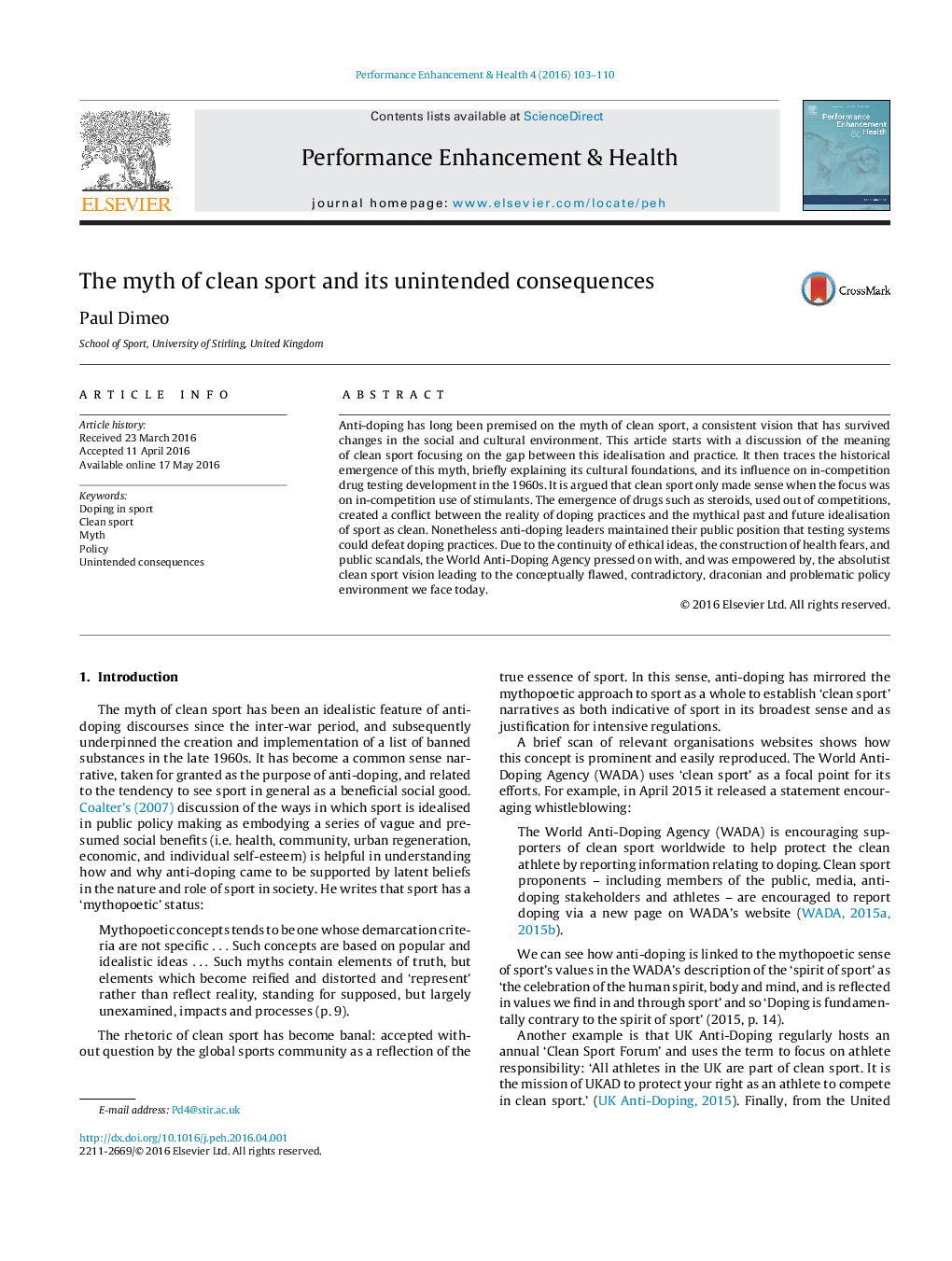| Article ID | Journal | Published Year | Pages | File Type |
|---|---|---|---|---|
| 889542 | Performance Enhancement & Health | 2016 | 8 Pages |
Anti-doping has long been premised on the myth of clean sport, a consistent vision that has survived changes in the social and cultural environment. This article starts with a discussion of the meaning of clean sport focusing on the gap between this idealisation and practice. It then traces the historical emergence of this myth, briefly explaining its cultural foundations, and its influence on in-competition drug testing development in the 1960s. It is argued that clean sport only made sense when the focus was on in-competition use of stimulants. The emergence of drugs such as steroids, used out of competitions, created a conflict between the reality of doping practices and the mythical past and future idealisation of sport as clean. Nonetheless anti-doping leaders maintained their public position that testing systems could defeat doping practices. Due to the continuity of ethical ideas, the construction of health fears, and public scandals, the World Anti-Doping Agency pressed on with, and was empowered by, the absolutist clean sport vision leading to the conceptually flawed, contradictory, draconian and problematic policy environment we face today.
